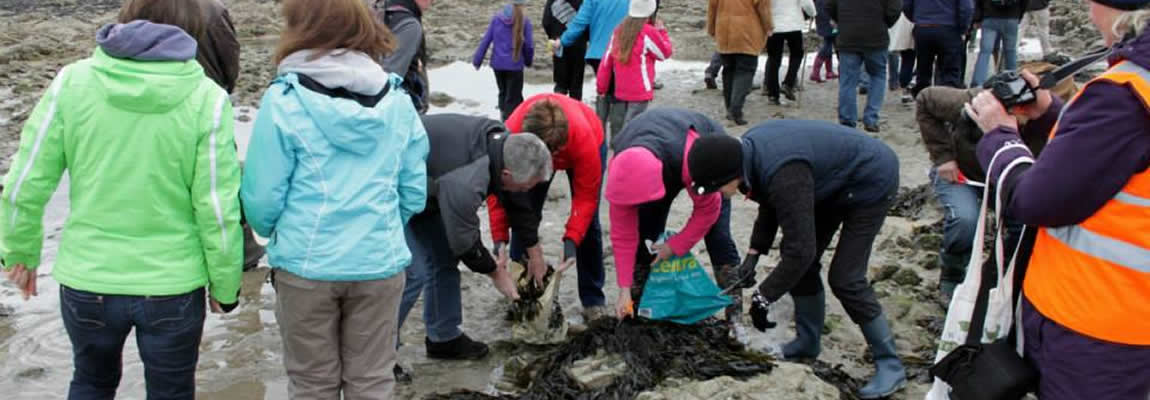
RECIPES
Pumpkin and Apricot Pie (with seaweed )
Hallowe'en brought lots of pumpkins this year and we,ve enjoyed using them in lots of ways. Here's a variation on the delicious, classic pie, just in time for Thanksgiving!
350g deseeded and peeled pumpkin
225g shortcrust pastry
20g Sweets and Baking Blend by The Sea Gardener
150g caster sugar
100g dried, slivered apricots
50g almond flour
3 free range eggs
5 mls natural vanilla extract
1 tblspn ground cinnamon
300mls double cream
225g no-soak dried apricots
Cut pumpkin into chunks and cook in boiling water for 15 mins. Drain and allow to cool.
Make pastry using 50g caster sugar, 10g seaweed blend and rolling out on almond flour. Chill for 20 mins.
Puree the cooled pumpkin in food processor. Add beaten eggs, cinnamon, vanilla, 100g sugar , 20g Sweets and Baking seaweed blend and lastly, cream.
Roll pastry and line flan tin. Bake blind for 20 mins at 200 deg.C. Turn down oven to 180 deg C.
Sprinkle apricots over pastry. Pour in the pie filling. Bake for 25 mins. Decorate with pecan nuts on top and complete cooking - 20 more mins.
Serve hot or cold, with cream or ice cream.
FORAGING
Foraging for food from the wild is fun, enjoyable and healthy. Whether it’s a family outing in the countryside – or on the seashore - or as part of a wild survival adventure, foraging connects us to the source of our food and to the rest of the natural world. It opens up new taste experiences and can satisfy a need for exploration and experimentation. It can do lots of good things, not least, developing skills in self-sufficiency.
If you’re new to foraging in the wild, here are a few tips to help you
What
Be sure about what you are picking to eat: Go with a knowledgeable guide who can differentiate between what is safe to eat and what is not. Use expert literature. Be very cautious about using unauthorised web sources. Use a good guidebook with quality images to help differentiate between what may be an edible plant and a similar-looking toxic one.
Where
Plants and seaweeds, absorb gases and nutrients from their immediate environment - good and bad. So avoid foraging near built-up areas, near marinas and ports, on roadsides with alot of traffic – the toxins from car exhaust in particular build up in plants, or beaches where cars are driven - where dogs are walked, where there are outfall pipes, polluted or nutrient-enriched streams. Check the water quality of beaches with the local authority if unsure.
Who
Don’t forage for seaweed alone. It is easy to slip on rocks/get caught by tides/lose phone signal; rocky shores are exposed to weather, all of these factors can turn a minor slip into a major accident. Avoidable if you’re with another person.
When
Check tides and weather forecast before you go out. The safest time to forage for seaweed is an hour or so before low tide. The aim is to be off the rocks before the tide turns.
And wait for a calm, dry day. Very windy days are not good and rain makes for even more slippy rocks.
Stay away from the coast during storms and heed all weather warnings.
Tide times for your area can be found at pocketsizetides.com Weather forecasts from met.ie
Keep an eye on our Facebook page (the sea garden) for updates on good times to forage each season.
How
Sustainability is key here. Just take a little here and there. Use a scissors or sharp knife to cut a piece from a seaweed plant, leaving the holdfast and at least 50% of the plant intact. Pulling seaweed from the rocks destroys the plant and leaves nothing to re-grow, leaves nothing for the marine invertebrates (such as limpets, periwinkles, small fish etc.) to feed on or shelter under and leaves nothing for other foragers. Seaweed is full of nutrients – vitamins, minerals, trace elements – just a little in the diet goes a long way.
Please, let’s not make the same mistake with seaweed that was made with fish and other resources...over-consumption.
RECIPES
Sweet Potato and Lentil Pie
The inspiration for this recipe came all the way from my niece Niamh in Australia, who's school produced a healthy eating calendar with 12 recipes.
So with a few variations, and the addition of seaweed.....here's a perfect vegan/vegetarian meal.
Chop and onion, 4 garlic cloves, a few cauliflower and broccoli florets and a stick of celery; grate a carrot and a courgette. Or whatever you have handy in the line of seasonal veg.
Cook 150g red lentils in a light stock. I use Marigold Vegan Bouillon.
Bake 3 sweet potatoes at 200 deg. for 30-40 mins.When soft, peel and mash with 1 clove of minced garlic and 4 tblspns of nutritional yeast. Stir in 2 tsps Sweets and Baking Seaweed Blend.
Fry the onion gently in a little olive oil, and add the other vegetables, stirring for about 5 mins.
Add about 700g tomato passata, 2 tsps mixed herbs, 2 tsps Salad and Stir-fry Seaweed blend, or some chopped dilisk, pepper to taste. Stir over medium heat for a few mins. Add the cooked lentils and 2 fistfuls of spinach.
Transfer to a lightly oiled baking dish.
Add small dollops of the sweet potato mix on top, and spread to cover. Sprinkle some sunflower or pumpkin seeds on top.
Bake for 20 mins in 200 deg. oven.
Sprinkle fresh thyme or parsley on top before serving.
You'll lick your fingers after this.
FORAGING
Foraging for food from the wild is fun, enjoyable and healthy. Whether it’s a family outing in the countryside – or on the seashore - or as part of a wild survival adventure, foraging connects us to the source of our food and to the rest of the natural world. It opens up new taste experiences and can satisfy a need for exploration and experimentation. It can do lots of good things, not least, developing skills in self-sufficiency.
If you’re new to foraging in the wild, here are a few tips to help you
What
Be sure about what you are picking to eat: Go with a knowledgeable guide who can differentiate between what is safe to eat and what is not. Use expert literature. Be very cautious about using unauthorised web sources. Use a good guidebook with quality images to help differentiate between what may be an edible plant and a similar-looking toxic one.
Where
Plants and seaweeds, absorb gases and nutrients from their immediate environment - good and bad. So avoid foraging near built-up areas, near marinas and ports, on roadsides with alot of traffic – the toxins from car exhaust in particular build up in plants, or beaches where cars are driven - where dogs are walked, where there are outfall pipes, polluted or nutrient-enriched streams. Check the water quality of beaches with the local authority if unsure.
Who
Don’t forage for seaweed alone. It is easy to slip on rocks/get caught by tides/lose phone signal; rocky shores are exposed to weather, all of these factors can turn a minor slip into a major accident. Avoidable if you’re with another person.
When
Check tides and weather forecast before you go out. The safest time to forage for seaweed is an hour or so before low tide. The aim is to be off the rocks before the tide turns.
And wait for a calm, dry day. Very windy days are not good and rain makes for even more slippy rocks.
Stay away from the coast during storms and heed all weather warnings.
Tide times for your area can be found at pocketsizetides.com Weather forecasts from met.ie
Keep an eye on our Facebook page (the sea garden) for updates on good times to forage each season.
How
Sustainability is key here. Just take a little here and there. Use a scissors or sharp knife to cut a piece from a seaweed plant, leaving the holdfast and at least 50% of the plant intact. Pulling seaweed from the rocks destroys the plant and leaves nothing to re-grow, leaves nothing for the marine invertebrates (such as limpets, periwinkles, small fish etc.) to feed on or shelter under and leaves nothing for other foragers. Seaweed is full of nutrients – vitamins, minerals, trace elements – just a little in the diet goes a long way.
Please, let’s not make the same mistake with seaweed that was made with fish and other resources...over-consumption.
